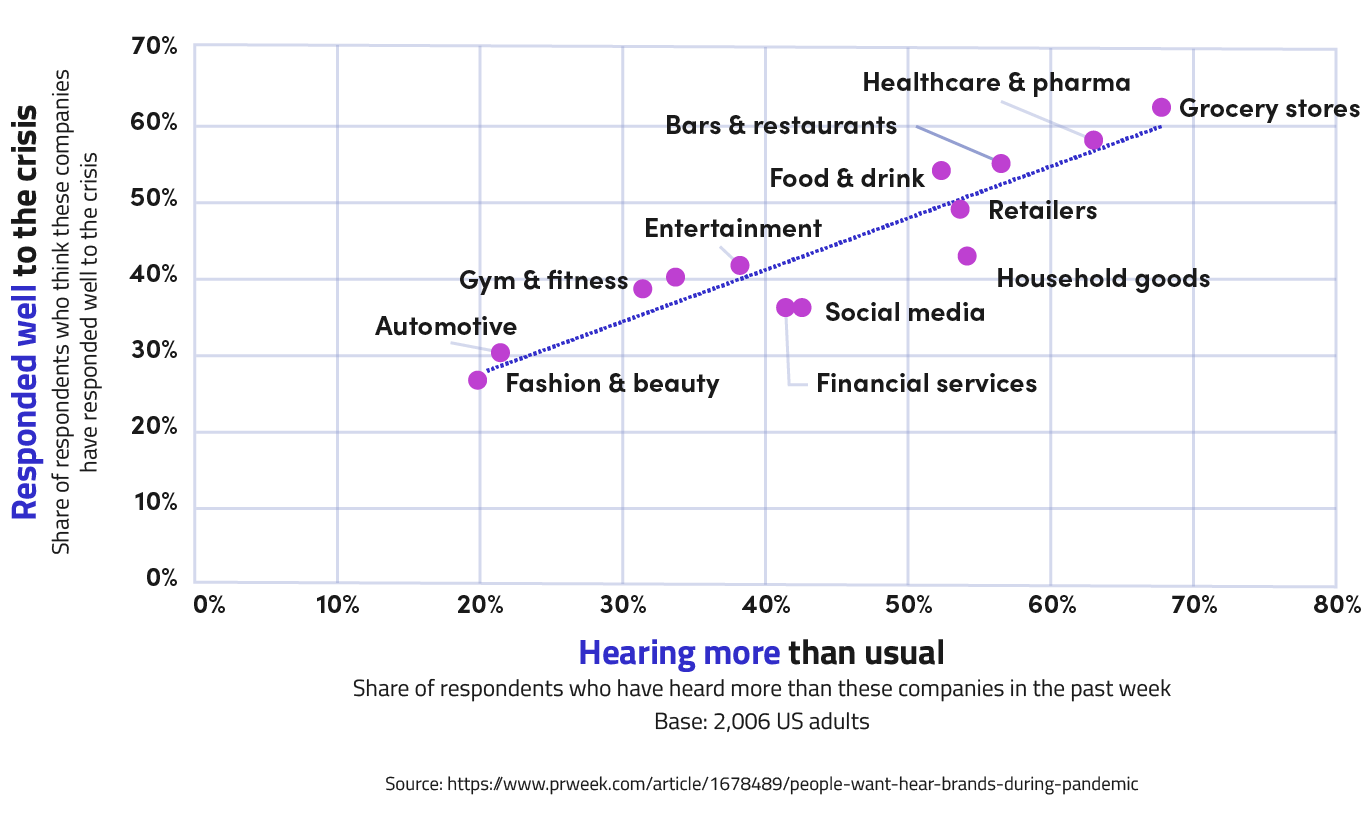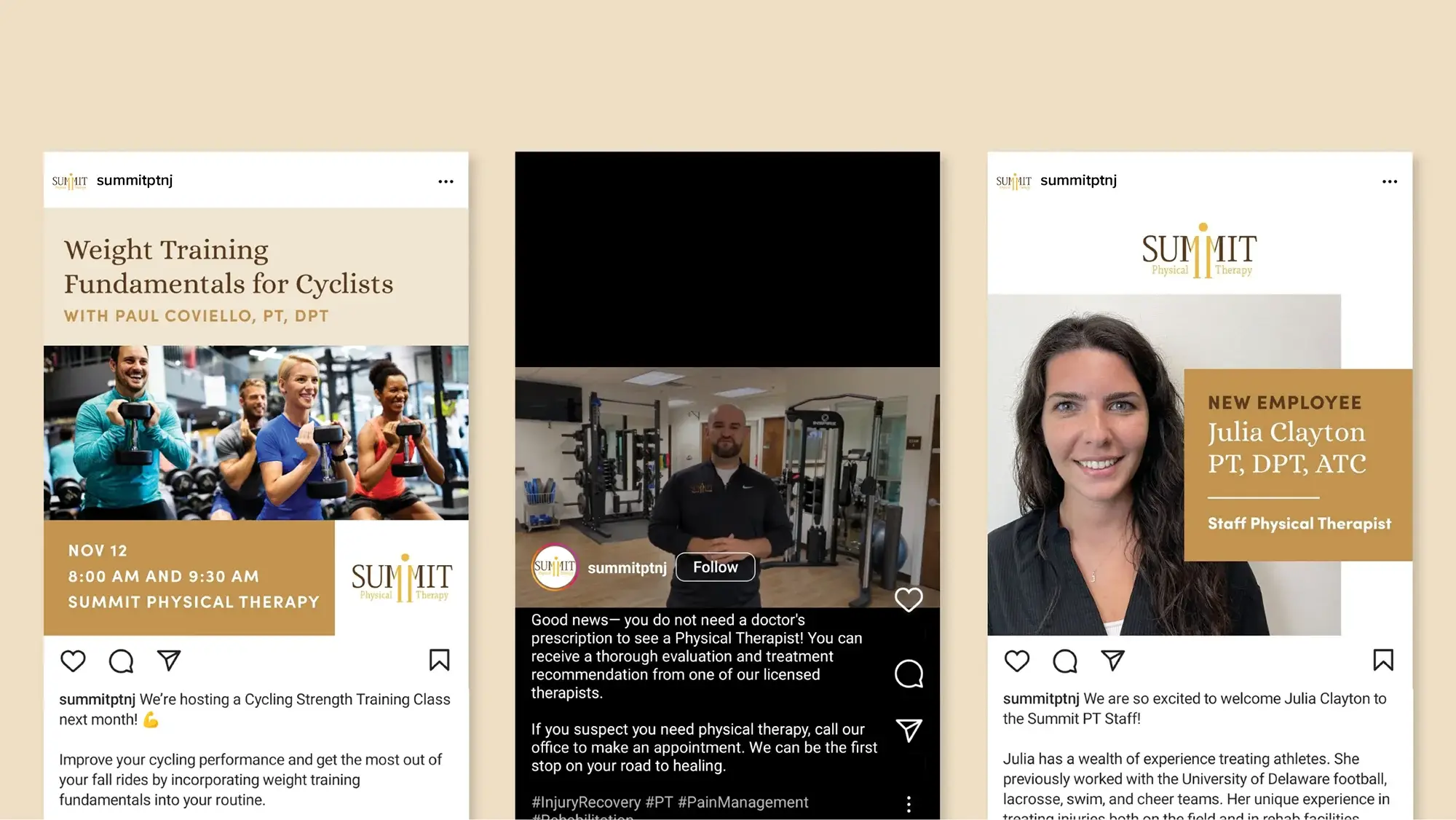We are a month into a global pandemic, and now that most Americans have settled into their “new-normal” routines, we have been fielding a very predictable question from business owners: Should I be doing any kind of marketing during this crisis?
[The answer is yes. But there’s more to it than that.]
Rather than curtailing marketing during a downturn, budget for it.
Everyone is trying to do more with less. When it comes to marketing budgets, there is plenty of research that shows how marketing during recessions can lead to success once the economy begins to rebound. Though the downturn due to COVID-19 is different compared to “typical recessions,” the evidence shows it is causing a tremendous economic slowdown. Looking back at times like these, however, McGraw-Hill Research discovered that when the economy took a hit following the 1981-82 recession, for example, companies that maintained or increased their advertising during the recession enjoyed an average sales growth of 275% over the next 5 years. By contrast, those who cut their advertising saw only 19% growth.
Although our country is in the midst of The Great Pause, we are already seeing glimmers of hope and scientists beginning to lay out plans that could help us to begin to reopen parts of the economy. However, the pandemic is pushing our country into a recession that is expected to last upwards of 18 months and our methods of communicating, interacting and conducting business will be changed forever.
Now is the time to be proactive in preparing for this immediate downturn AND also the time to retool your marketing activities for the foreseeable future.
First, adjust to your customers’ new attitudes towards products and spending:
We first need to consider consumers’ emotional reactions to the economic environment.
Harvard Business Review’s, “How to Market during a Recession” states that marketers should adjust their market segments to psychological segmentation rather than more traditional marketing demographics such as age, sex, or education level.
According to Harvard Business Review, the psychological segments break down into some of these categories:
Slam-on-the-brakes: These folks’ reaction to the pandemic is to aggressively cease all spending and postpone purchases. This segment will be difficult to reach at this time.
Patient-but-Pained: This is the largest segment of the American population. Although patient-but-pained consumers are optimistic about long-term recovery, they are less confident about the near future. They may be pulling back on discretionary spending and are concerned about maintaining their standard of living.
Comfortably Well-Off: These folks are in the top 5% of the American income bracket and feel secure about their financial position and future prospects. They are making purchases but may be more selective about larger purchases.
Do any of these segments resonate with your customer base? Understand that your business may serve one or more of these segments and the way you speak to each of them may need to be adjusted. You may also opt to shift your immediate marketing towards those who are more likely to buy now, while still not ignoring your other customer segments.
Adjust your marketing channels:
The pandemic has adjusted our way of life, how we work, and how we consume media. With that in mind, marketers need to adjust how they are delivering their message to their consumers.
Since the stay-at-home mandates began in mid-March of 2020:
- People are doing 70% more web browsing, 63% more TV watching, and spending 61% more time on social media.
- Streaming video has increased 61% from pre-pandemic levels.
In the near term, marketers should consider transferring budget from traditional marketing toward digital channels, television, residential direct mail and social media. Longer term adjustments should keep social distancing in mind. If your business relies heavily on person-to-person contact, such as tradeshows, conferences and special events, now is the time to figure out how those close-contact networking events will be replaced.
How to market during COVID-19?
Be Community Focused
The survey of 1,000 consumers by the Association of American Advertising Agencies on March 18, 2020 “to understand how consumers feel about brand communication during the pandemic,” found that “more than half (56%) of respondents are pleased to hear about brands taking actions to help out communities, like making donations of goods and services.” Consumers are open to hearing from brands right now, if they are communicating in a way that is helpful, entertaining and empathetic. Keep this in mind with your marketing.
Follow these guidelines:
Lead with Empathy, in an Authentic Way
Remember that many people are enduring challenging times. Show that you are human and avoid tone-deaf messages that seem opportunistic. Show your support for your local community, our first responders, and keep the psychological segmentation discussed above in mind.
According to the chart below, consumers that have heard from brands during this difficult time are more likely to perceive those brands as handling the crisis better than other brands that have remained quiet. A positive perception can lead to long-term brand trust and equity in the future.
More vocal brands perceived to have responded better:

Prioritize Customer Service by Going the Extra Mile
Consumers may want to reach out to you in different ways. Be flexible and chat within social media or take a virtual phone call even if it may be a new way of communicating for your company. Your customers will remember that you went the extra mile when it really counted.
Focus on the Clients/Customers You Already Have
Now is the time to strengthen the relationships you have with your current customers. The data shows this will lead to more business and purchases, either now or in the future.
Assess Business Opportunities and Pivot
Are there any aspects of your business that may flourish during this time? Some examples:
- a make-at-home pizza delivery kit sold by a restaurant
- a refinancing program for loans
- a subscription service for at-home learning
- a way to purchase something in bulk at a discount
Rebalance your marketing spend to push new products or services appropriately. The important thing to remember is: Don’t stop.
Need help putting a marketing plan in place for your business?
Trillion has worked in a multitude of industries to help build brand awareness as well as sell products and services. If you are struggling to get your marketing up and running or pivot your efforts, call us. We’d love to help: 908.219.4703.







